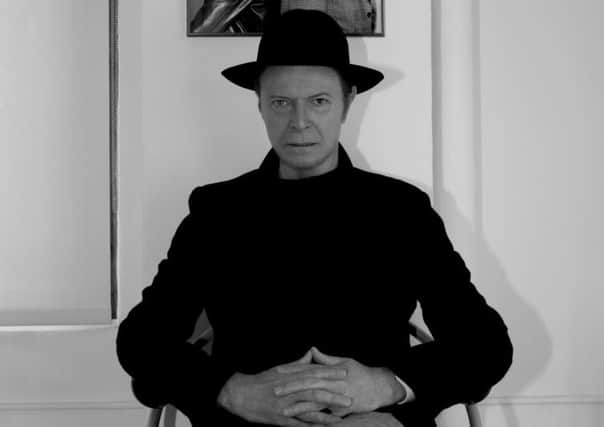Daft Punk, David Bowie rule over year of comebacks


For pop fans of taste and distinction, 2013 officially began on 8 January with the abrupt announcement of a new single by David Bowie. Better still, the surprise gift of Where Are We Now? was followed by The Next Day, his first album in almost a decade and a sonic treat all the more cherishable for being so utterly unexpected.
In a year of comebacks, which included a solo album from enigmatic Abba vocalist Agnetha Fältskog, My Bloody Valentine’s website-crashing download release of their first new music in more than two decades and Ozzy Osbourne’s first contribution to a Black Sabbath album in 35 years, Bowie’s was the most understated, yet audacious return of the lot. With the death of Lou Reed in October, it was a comfort to know that his old mucker was still thriving. But he was soon upstaged – commercially, if not quite artistically – by a couple of French blokes in helmets.
Advertisement
Hide AdIn terms of ubiquity, Daft Punk ruled the year with the love-it-or-like-it (because no-one, it seemed, hated it) Nile Rodgers-assisted irresistible groove of Get Lucky and the accompanying album Random Access Memories, which harked back to classic disco and funk in its use of actual living musicians. Phew, rocket science!
Lady Gaga spent much of the year tantalising her fans with verbose intimations about her latest wouldbe opus Artpop, while she recovered from hip surgery. Jeff Koons took care of the art side of the equation, making a showroom dummy sculpture of Gaga for the album sleeve, while the Lady herself went to town on a more streamlined version of her trademark dancefloor pop, with a whole mess of lyrical allusions for those who cared to look beyond the huge tunes and electro hooks.
MIA’s return was also some time in the works. As slated release dates for her new album came and went throughout the year, MIA claimed that her label were dragging their heels because they felt the music was “too positive”. Eventually she forced their hand by threatening to leak the album herself if the label wouldn’t release it. After all the intrigue and chicanery, Matangi was, how you say, “too meh”.
Rumours that Miley Cyrus’s label felt her rebranding was “too subtle” were completely made up. Instead, the former Disney princess grew up and regressed simultaneously with her twerking antics and (literal) sledgehammer imagery. Justin Timberlake, meanwhile, attempted to go high concept with two albums entitled The 20/20 Experience which had their slick neo-soul moments but were overall far from clear-sighted.
New hip-hop contenders emerged in the shape of Kendrick Lamar and Macklemore, whose Thrift Shop video became the Youtube hit of the year. But they have a long way to go before they can even touch the hem of Kanye West’s gilded garment. This summer, both West and Jay-Z vied for the position of hip-hop’s most high with their messianically titled albums, Yeezus and Magna Carta Holy Grail, released just a couple of weeks apart.
Only rap’s most overgrown brat Eminem threatened their hegemony, returning with the blistering Marshall Mathers LP 2 in November, but even Slim Shady was pipped for entertainment value by the ongoing adventures of Snoop Dogg, who found reggae and was reborn – for the purposes of promoting his album Reincarnated – as Snoop Lion. By the end of the year he had tired of the Rastafarian lifestyle and announced that he would be releasing a George Clinton-style funk album using the guise of Snoopzilla. The question is: where next, now he has reached the top of the rapper name food chain?
Advertisement
Hide AdBack on planet earth, The Stone Roses returned to the scene of one of their most renowned gigs, playing to at least six times the number of fans who had attended their Glasgow Green show 23 years earlier. It wasn’t a pretty sight nor – thanks to Ian Brown’s tuneless braying – sound but it did confirm that splitting up prematurely then reforming is a sensible commercial gambit for any group.
Rod Stewart released his first album of original material in about a century and celebrated with a four-night stand inaugurating Scotland’s gleaming new purpose-built entertainment arena. Since the Hydro opened its doors at the end of September, it has barely had a quiet night in, the pick of its pops so far being Arctic Monkeys who, for many, turned out to be the band of the year.
Advertisement
Hide AdSusan Boyle didn’t stray too far from home, confining her first-ever tour to a select string of Scottish theatres. Other Scots went boldly forth in contrasting ways: Biffy Clyro released a monumental double album, Opposites, while KT Tunstall stripped things back, divesting herself of band, husband and home over the course of recording Invisible Empire/Crescent Moon. Franz Ferdinand and Texas both swaggered back on the scene as if they had never been away, while synth pop trio Chvrches became the Scottish breakthrough act of the year, reaching the UK Top Ten and US Billboard Top 20 with their debut album, The Bones Of What You Believe. But that still leaves them some way behind the inexorable Emeli Sande, whose Our Version Of Events was the biggest-selling album in the country for the second year running.